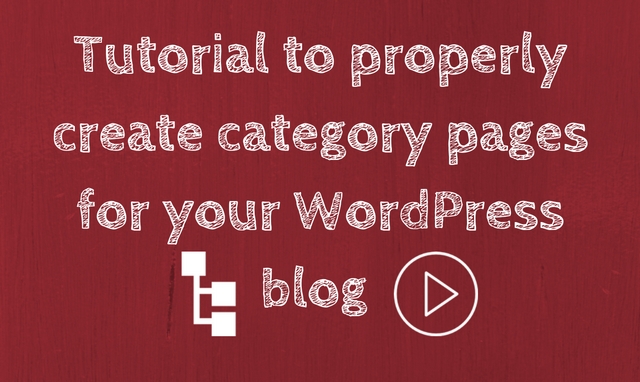In this post, let’s see how to create categories for your blog or website.
So, it’s a really good idea to have categories in your blog. Categories are really important, because they lend a sense of organization to your blog and also they make your blog search engine friendly.
If you’ve categories you really get the lead on to what to write about.
We bloggers are often confused about what we should write in our blog, so once you have categories you know what the things you should focus on are.
Now it is not that you can’t have a blog if you don’t add categories, you can publish a blog without categories.
However, having categories means that it is easier for search engines and other people on the internet to understand about the content of your blog.
Else it can be really confusing to understand at a glance what you are writing about. Create around five to eight categories before you start writing any content in your blog.
Five to eight is not too less or not too many, it is the optimum number of categories to start with. Once you’ve made a list of categories, it’s time to create them in your WordPress website.
Watch the video below to see how to do it:
How to create category pages correctly on your WordPress blog?
- Firstly you have to log in to your WordPress account and go to the dashboard.
- In the dashboard on the left side there will be a list, one of the items in the list will be posts, so you will have to place your cursor there and a list of options will come where you can choose categories.
- Here you can create your categories.
- You will find a box for putting the category name, say blogging-tips, a slug, and a box called parent and one called description.
- Now, if the name you are choosing for your category is a keyword then you must type it in the slug box. This will make your blog search engine optimized.
- Having a URL like yoursite.com/blogging-tips really helps search engines to track down your blog.
- Next you must fill in the description box. Filling in a description is really important as it helps search engine optimization and makes it easy for people to find and know about your blog. If you’re wondering if the description will show up in the blog page, it really depends on your theme. Some themes display it and some don’t.
- So after this if you click on create category, your category will be created. In the right panel you can see your category and the number of posts under it. As you keep writing posts under it, the count goes up.
Creating a Parent category
For this you will have to create another category say Content Marketing. Fill in the slug, description, like before.
After you are done, here you have to choose another category as the parent of his category (watch video above if you have doubts).
So say make Blogging-tips the parent of this category. On the right hand you will see that the parent has been created.
Advanced options
Some people have SEO options in their WordPress which allows them to edit a few more things to optimize their categories for the search engines – depends on whether you are using a SEO plugin or a theme (like Genesis themes) that has this feature..
Now if you have that, just click on edit beside the respective category, a window will open up with boxes like Meta description, SEO details, etc.
It is advisable that you fill out these boxes so that search engines and people can easily come to your blog.
After you have created five to eight categories for your blog, you can start using them.
In order to create a new post, click on posts and then new post. On the right side you will see the categories that you’ve created listed.
You can put your post into one or more categories and publish it.
Having categories makes things really clean and simple in your blog.
Further it helps search engines and people to know about your blog and visit your blog. Therefore having categories are really important for a blog.







Hi Jane,
As always a good post. And surely got some new things to learn from you.
Thanks for sharing.
Hi Jane,
As always a good post. And surely got some new things to learn from you.
Thanks for sharing.